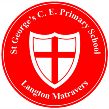Maths
Our Vision
Through a caring and positive environment, we provide the opportunity for every child to reach their full potential. We embrace Christian values and ensure all children are ready for their next steps.
Resources
In school, we use the White Rose Maths scheme to help support our teaching of Maths. Our KS2 children also have access to TT Rockstars which focuses on times table facts.
Human
Numeracy related issues are regularly included in staff meetings. This may be to introduce new initiatives, provide training for numeracy or whole school support in planning and assessment. Staff attend INSET days to develop their professional competencies and training needs are identified as a result of monitoring, results of skills audits or performance management reviews.
Physical
Children have access to manipulatives at all times including Numicon, Diennes apparatus, multilink and counters. Number lines and hundred squares are provided for use in all lessons as well as 2D and 3D shapes as appropriate. At the beginning of the year two work books are provided: one for formal work and one for mathematical jottings to show their thinking.
Inclusion
We will ensure that all pupils have equal access to the curriculum, regardless of gender, race, religion or ability. Pupils with specific reading, speech and language, dyscalculia or hearing difficulties will be identified and supported through specific programmes in school and external help will be sought where necessary.
Assessment
There is a whole school approach to the teaching and assessment of numeracy. A wide range of calculation strategies will be taught throughout all classes that reflect the requirements of the National Curriculum and EYFS Development Matters programme. Half termly assessments are conducted and the results used to assess each child on an individual basis.
Mathematics Mastery
At the centre of the mastery approach to the teaching of mathematics is the belief that all children have the potential to succeed. They should have access to the same curriculum content and, rather than being extended with new learning, they should deepen their conceptual understanding by tackling challenging and varied problems. Similarly, with calculation strategies, children must not simply rote learn procedures but demonstrate their understanding of these procedures through the use of concrete materials and pictorial representations. This policy outlines the different calculation strategies that should be taught and used in Year 1 to Year 6 in line with the requirements of the 2014 Primary National Curriculum.
Background
The 2014 Primary National Curriculum for mathematics differs from its predecessor in many ways. Alongside the end of Key Stage year expectations, there are suggested goals for each year; there is also an emphasis on depth before breadth and a greater expectation of what children should achieve. In addition, there is a whole new assessment method, as the removal of levels gives schools greater freedom to develop and use their own systems. One of the key differences is the level of detail included, indicating what children should be learning and when. This is suggested content for each year group, but schools have been given autonomy to introduce content earlier or later, with the expectation that by the end of each key stage the required content has been covered. For example, in Year 2, it is suggested that children should be able to ‘add and subtract one-digit and two-digit numbers to 20, including zero’ and a few years later, in Year 5, they should be able to ‘add and subtract whole numbers with more than four digits, including using formal written methods (columnar addition and subtraction)’. In many ways, these specific objectives make it easier for teachers to plan a coherent approach to the development of pupils’ calculation skills. However, the expectation of using formal methods is rightly coupled with the explicit requirement for children to use concrete materials and create pictorial representations – a key component of the mastery approach.





